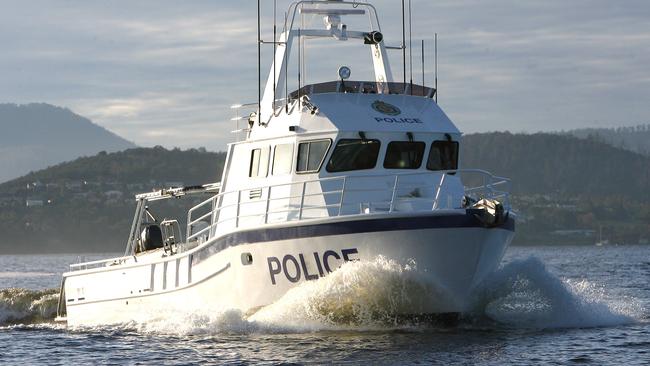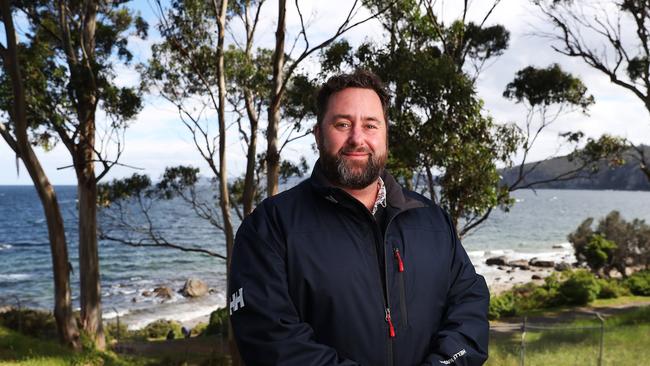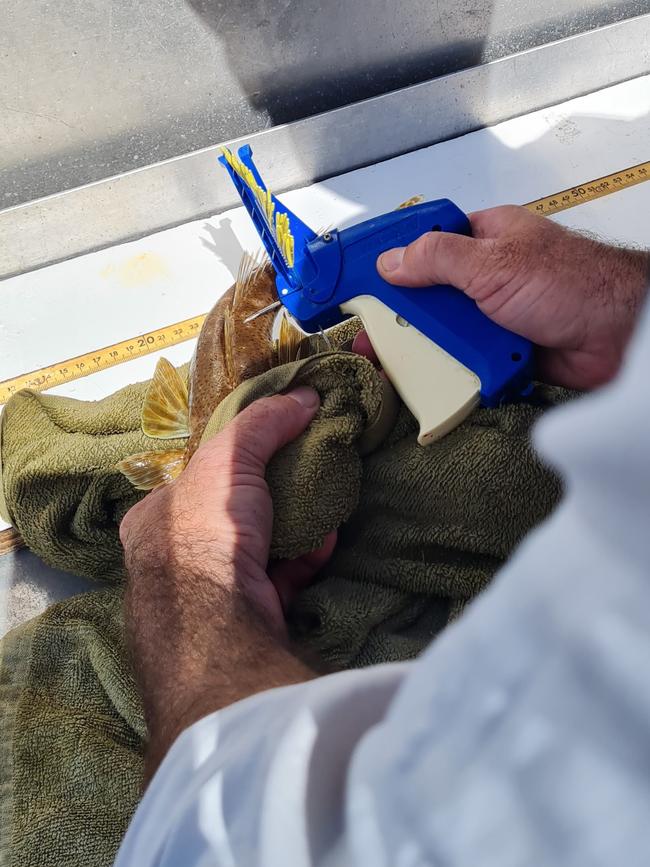Sand flathead Tasmania: IMAS receives $4.2m to save species as police pounce on anglers
Tasmania Police say they have detected multiple anglers in the state’s North-West with under or oversized sand flathead, as a scientific organisation receives $4.2m to save the iconic species.

Tasmania
Don't miss out on the headlines from Tasmania. Followed categories will be added to My News.
Tasmania Police say they are enforcing new bag and size limits on the state’s depleted sand flathead stocks, with multiple anglers in the North-West detected with under or oversized fish.
The crackdown, set to enforce stricter regulations that came into effect on November 1, coincides with $4.2m of new funding provided to the University of Tasmania’s Institute for Marine and Antarctic Studies to help save the iconic species.
Last month the state government announced significant curbs on recreational sand flathead fishing and a total ban on commercial fishing in response to plumetting numbers.
The recreational bag limit has been reduced to two fish in D’Entrecasteaux Channel, Derwent River and Norfolk and Fredrick Henry Bays, five on the East Coast and 10 elsewhere.
The limits were based on scientific evidence the fishery was depleted and at risk of collapse.
In a statement on Saturday, police said recent checks had resulted in fishers fined or cautioned for under or oversized sand flathead, or exceeding the daily catch limit across a range of species.
“Several recreational fishers in the Burnie, Ulverstone and Devonport areas have been detected with under or oversized sand flathead,” police said.

“A commercial fisherman at Stanley has also been detected exceeding the number of calamari taken in a single fishing trip. These infractions of the rules have resulted in the seizure of the catch by police.”
For recreational fishing, fines start at $390 for an under or oversized sand flathead, and a commercial fisher can expect to cough up at least $780. Depending on the scale of the breach, police have powers to seize fishing equipment and even vessels.
While police enforce the rules, IMAS will have greater firepower to understand just why the species is vanishing so quickly, with more than $4m in grant funding provided for it to better understand what’s going on.
IMAS has been awarded a $3.29m research grant from the Australian Government’s Fisheries Research and Development Corporation, and $900,000 from the Tasmanian Government’s Department of Natural Resources and Environment Tasmania (NRE).

Fisheries scientist Professor Sean Tracey will lead the program to fill knowledge gaps about sand flathead’s biology, movement and growth.
“Our new research will focus on improving the stock health of this popular fish to acceptable levels, as quickly as possible,” Professor Tracey said.
“The current level of fishing mortality – fish removed by fishing – is around four times the natural mortality rate, which has driven the biomass to low levels. The biomass will not begin to recover until the fishing mortality rate is below the natural mortality rate, and that requires a significant reduction in catch.”
“The primary objective of the project is to develop models to predict and measure the recovery trajectory of the stock around the state. This will reveal how long the biomass will take to recover towards, and ideally above, a target of 40 per cent of the pre-fished biomass – which is an accepted measure of sustainability in fisheries science.”

University of Tasmania Behavioural Economics researcher Professor Swee-Hoon Chuah will be working with recreational fishers and peak body TARFish to understand the social aspects of sand flathead fishing.
“With these insights, effective and collaborative management strategies can be delivered, as well as education and engagement activities that will include a stewardship program – and this will increase social acceptance and contribute to stock recovery,” Professor Chuah said.
Through the project, TARFish will develop a stewardship program to encourage fishers to learn more about the fishery.
NREs latest report on the species found recreational fishers catch about 98 per cent of all sand flathead caught in Tasmania.
Originally published as Sand flathead Tasmania: IMAS receives $4.2m to save species as police pounce on anglers


